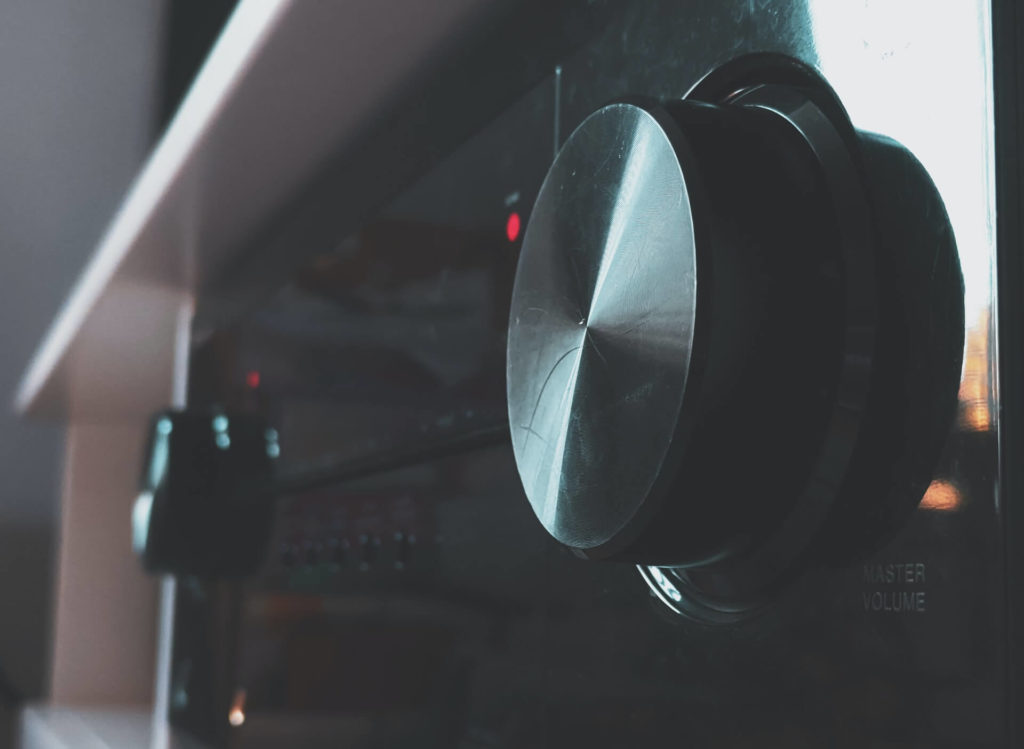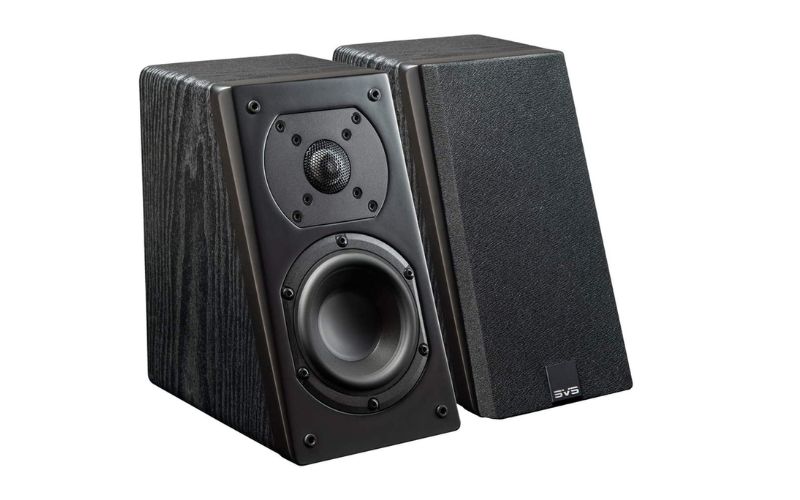Building a home theater is expensive. Features like Dolby Atmos Height Virtualization are shortcuts to a better experience. Is Dolby Atmos Height Virtualization worth it? How does it compare to the real thing? The results may surprise you.
Table of Contents
What is Dolby Atmos?
Home theater is about more than great picture quality. Adding great audio will drastically improve your experience. That means multiple speaker setups and surround sound technology. Having a 5.2 speaker setup isn’t new, but Dolby Atmos made this more complicated. Dolby Amos is Dolby’s latest sound format making waves. Dolby Atmos surround sound technology essentially creates a 3D sound stage. This is accomplished with Dolby’s object-based surround format that can position effects around the soundstage.
Content creators and sound designers use this to create a three-dimensional space. This was possible with normal surround sound, but Dolby Atmos adds a height effect. Dolby Atmos effects in movies can be heard at and above the listener level. Imagine an action movie scene with a flying helicopter. You would actually hear chopping rotor blades from overhead with Dolby Atmos. This requires adding height speakers that project sound above listener level. You will have to install ceiling speakers for the best home cinema Atmos experience. Dolby Atmos is possible without ceiling speakers, but you will need a 5.1.2 setup at a minimum. That’s a 5.1 surround sound setup plus two Atmos speakers.
What Is Dolby Atmos Height Virtualization?

If you don’t want to add height or overhead speakers, Dolby Atmos Height Virtualization is your best bet. Height Virtualization is a feature that basically mimics the Atmos height effects. Dolby Atmos Height Virtualization can provide more immersive and 3-dimensional audio. Unfortunately, height effects will be less subtle than Dolby Atmos with overhead speakers. Without height speakers, Height Virtualization technology is essentially tricking the listener into hearing overhead effects. This allows users without Atmos speakers to enjoy an Atmos soundtrack.
Height Virtualization will play base layer or listener level sounds as normal. It will utilize the virtualizer to process the height layer or Atmos effects. Both the base layer and height layer are played alongside each other. The height layer is just reproduced to sound as if it’s actually playing above the listener level. Just like Dolby Atmos, Height Virtualization technology must be implemented through your AV receiver. Height Virtualization can even be used in a stereo setup with two bookshelf speakers. Up to 7 speakers can be used with Height Virtualization.
Does Dolby Atmos Height Virtualization Work?
Now that you understand exactly what Height Virtualization does, you likely still have one question. How does Height Virtualization perform in real-life use? It performs pretty well, but it doesn’t match the height effects you will get from true overhead speakers. There can be a significant difference depending on your setup and listening environment. Even up-firing speakers will perform better than Height Virtualization. It actually reminds me a little of Dolby’s DTS X 3D surround feature I have tried with music. Height Virtualization is definitely noticeable and effective when using proper Dolby Atmos content (more on this later).
Dolby Atmos Height Virtualization is more subtle than the Atmos experience with proper overhead or height speakers. Dolby Atmos height sounds will feel much closer to listening level. You may actually enjoy this, as some people find height effects from overhead speakers distracting. Renowned speaker designer Andrew Jones actually thinks up-firing speakers provide the best Dolby Atmos experience. His reasoning (along with others) is that overhead or ceiling speakers produce height sounds too separated from the horizontal plane of the listener. So separated that it distracts and breaks immersion. This may come down to a preference, but it’s important to note he isn’t the only one that feels this way. Some have found Dolby Atmos Height Virtualization a value-added feature that improves the home theater experience. It doesn’t change the fact that it’s not technically replicating Dolby’s vision of true Atmos home cinema.
Requirements for Dolby Atmos Surround Sound Technology

It’s possible Dolby Atmos Height Virtualization isn’t for you. Many home theater enthusiasts will want the real thing. What do you need for true Dolby Atmos home theater setup?
AV Receiver With Dolby Atmos Support
You will need a compatible AV receiver to implement Dolby Atmos. Receivers process these different audio formats and send the necessary information to your speakers. An AV receiver must specifically support Dolby Atmos to process data and send discrete height info to the necessary Atmos speaker. I use a Denon receiver, but you can find Dolby Atmos support on various receivers. Denon, Yamaha, Marantz, and more all have this capability. The catch is that the Dolby Atmos surround sound format is much more likely to be supported on more recently released AV receivers. You won’t be able to grab just any old Denon receiver and expect it to be compatible. Just remember to check the specifications.
Atmos Speakers
Atmos speakers is kind of a catch-all term. It should also be noted that even bookshelf speakers mounted near a ceiling can be used for Dolby Atmos. It’s most important that those speakers can actually produce Atmos effect from overhead. They’ll also need to be wired and designated as Atmos computers on your AV receiver. Here are the three most popular options for Dolby Atmos speakers.
Ceiling Speakers
Ceiling speakers are sometimes referred to as overhead speakers. Ceiling speakers are generally considered the ideal choice for the best height effects. Ceiling speakers are placed above the listener and typically in configurations of two or four. Installing ceiling speakers inside or on your ceiling is not an easy task. It can also turn into an expensive solution if you pay to have them installed. Adding speakers to the ceiling still makes sense if you want the best performance. It’s also more seamless for a new build or renovation.
Height Speakers
Height speakers will need to be mounted on the wall near the ceiling. You might also hear them referred to as front heights or direct radiating height speakers. Configurations of two or four height speakers are popular. Only front heights are used in a two-speaker configuration, while four would simply add two rear height channels. They can also be mounted on the side of your listening position. Mounting height speakers will involve some work. It should not be nearly as involved as installing ceiling speakers though. People who utilize different speakers for Atmos effects typically mount and place them like height speakers. The Polk Audio OWM3 is a great example of a speaker than can be mounted high and used for Atmos height effects. Unlike real height speakers, they just weren’t designed for this exact purpose. SVS’s Prime Elevation speakers are traditional height speakers.
Up-firing Speakers
The most simple set-up of these 3 options will be up-firing speakers. They can be simply placed on top of bookshelf or floorstanding speakers. Once placed correctly on top of your front speakers, they will project Dolby Atmos height effects onto the ceiling. Those effects will then project off your ceiling onto the listener. Because of how height effects are reproduced, a ceiling height of 8 to 9 feet is required. The actual performance of up-firing speakers can vary, but it’s typically considered the least optimal of these 3 options. While some prefer up-firing speakers over height or even ceiling speakers, this isn’t the consensus.
Dolby Atmos Content
The last piece of the puzzle is the actual source content from an Atmos soundtrack. The actual audio content of your source data must be Dolby Atmos. At times, this can be a confusing part of the puzzle. Dolby Atmos content has been easier to find in recent years. You should know that not all Atmos mixes are created equal. The height effects may not be utilized much or at all depending on the movie.
Streaming devices also play a role in your ability to access a Dolby Atmos soundtrack for a movie. It can be difficult to understand with so many AV formats such as Atmos, Dolby Vision, HDR10, etc. Just know that your streaming device must be compatible with these formats to access them. Many streaming services will display the formats being used for a particular piece of content. Disney+ might be the best at this even managing to squeeze in things like IMAX Enhanced. Just make sure you are using a Dolby Atmos compatible streaming device. Once the stream begins, my Denon receiver shows the current sound format being used. Most AV receivers have this feature and that’s the best way to confirm you are getting Dolby Atmos audio.
In Conclusion: Dolby Atmos vs Height Virtualization
Dolby Atmos is a significant advance in home cinema. Home theater enthusiasts in search of the most immersive audio experience are likely fine adding speakers. Discrete height speakers are required for the best Dolby Atmos experience. Dolby Atmos Height Virtualization provides a stop-gap for many. Its effects may be more subtle, but you may be surprised by its performance. As we mentioned, some have preferred the Height Virtualization experience. It’s as simple as enabling the feature for compatible AV receivers. Testing out the feature in your space is the best way to see if it enhances your surround sound experience.
The Dolby Atmos Experience: FAQs
Can I Get Dolby Atmos On A Laptop?
Things have become muddied as headphones, laptops, soundbars, and TVs are labeled as having Dolby Atmos audio. Similar to Height Virtualization, this typically means a more immersive or spatial listening experience. You should not expect similar performance to multiple speakers and an AVR from a laptop.
How Do I Know I’m Getting Dolby Atmos?
The best way to confirm is to check your AV receiver. Most can display the audio format currently being utilized. It can typically be found on the screen or in a companion app. You’ll also need properly placed speakers to obtain the proper Dolby Atmos experience.
Are Dolby Atmos Soundbars Worth It?
If you’re really restricted on space, it’s worth a shot. You should expect an improved experience from a regular soundbar. A good Dolby Atmos soundbar can come with additional speakers that can be mounted on walls. This is great for the Dolby Atmos experience. Nakamichi’s 9.2.4 Atmos soundbar is $1,899. Similar prices just make it difficult to recommend over actual speakers.

Keith Collins has been writing for over 15 years for various publications. He’s a lover of music, home theater, and excellent sound quality. His fondness for technology in addition to his non-stop curiosity fuels his writing ventures.
Regarding “overhead or ceiling speakers [producing] height sounds too separated from the horizontal plane of the listener. So separated that it distracts and breaks immersion…”, I totally agree with this, not just with ceiling speakers but with all surround speakers. My TV screen is in front of me, and the screen is just not big enough for surround speakers to do anything but distract me from the content playing on the screen in front of me. The sound of a helicopter might be coming from above me just like in real life but hey, the helicopter I’m seeing is still just flying on the screen in front of me & the sound is too dislocated from the vision to seem anything but contrived. I’ve moved my surround speakers to the side of the front and centre speakers. Now I’ve got a sound-stage that spans much of the width of the room, but all in front of me, aligned with the screen I’m watching. It’s much more satisfying and actually, more realistic too somehow.